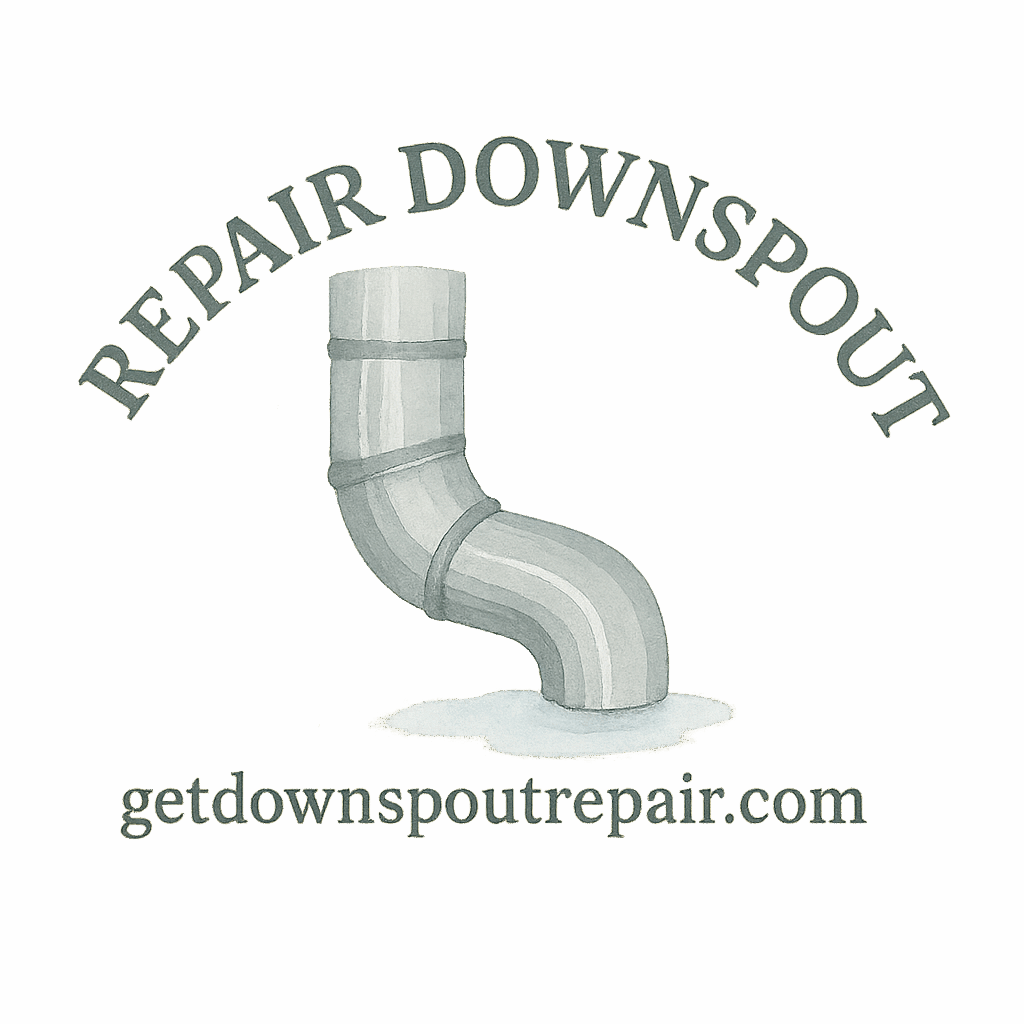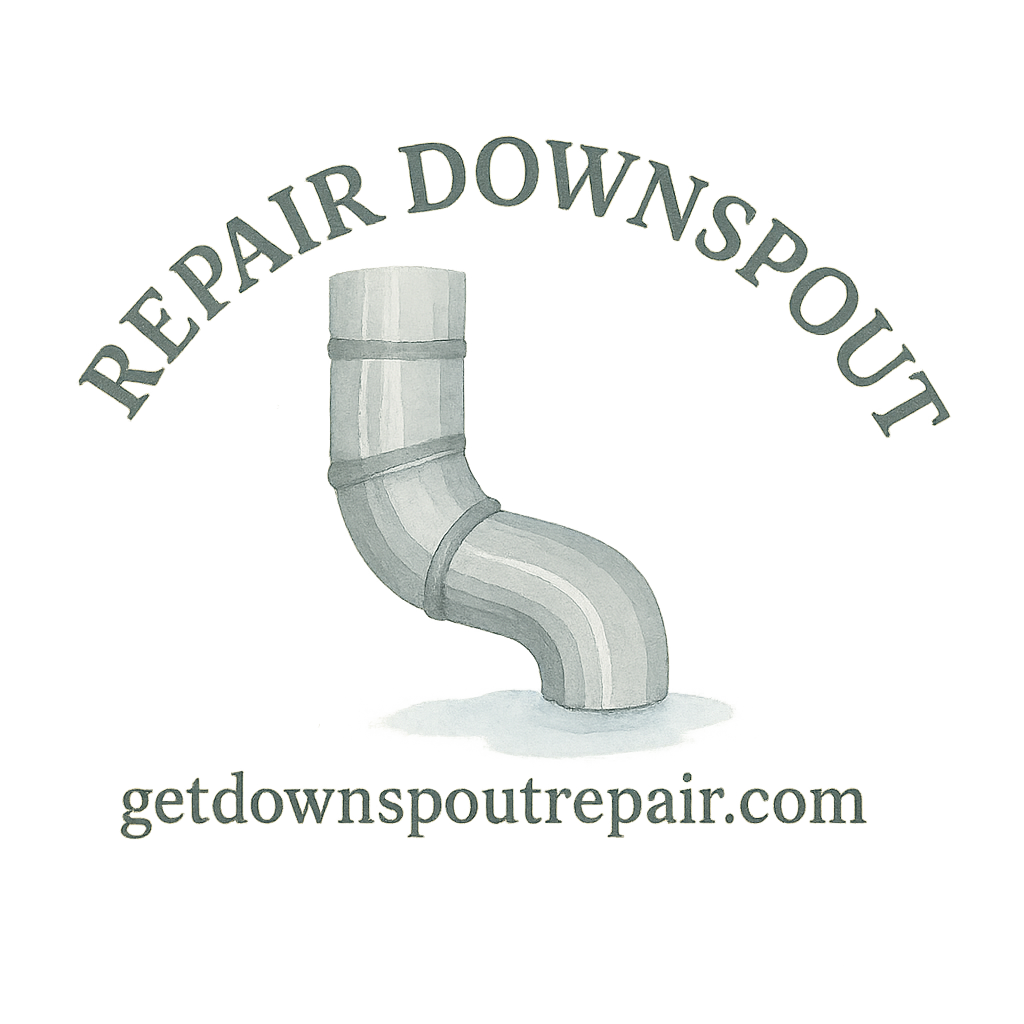Introduction
So, your downspout isn’t doing its job and water is spilling everywhere? Don’t panic. You don’t need to be a pro contractor to handle basic downspout repairs. In fact, with a little patience and a few tools, even complete beginners can fix downspouts effectively. This guide breaks down 8 simple DIY downspout repair steps to help you restore proper water flow, protect your home, and save money.
And guess what? You don’t need fancy skills or high-end gear. Just follow along, and by the end, you’ll be confident enough to handle minor gutter and downspout issues on your own.
Why Downspout Repair Matters
Preventing Water Damage
A faulty downspout isn’t just annoying—it can wreak havoc on your home. Overflowing water can pool near your foundation, seep into basements, and even damage landscaping. That’s why proper downspout drainage protection is key.
Saving Money on Costly Repairs
Ignoring small downspout issues can lead to bigger (and more expensive) problems. A quick DIY fix today can save you thousands in future foundation or siding repairs. If you’re on a tight budget, check out these budget-friendly repair tips.
Protecting Your Home’s Foundation
Your home’s foundation is like its backbone. Poor water drainage from neglected downspouts can slowly erode soil, weaken the foundation, and cause long-term structural issues.
Tools and Materials You’ll Need
Essential Downspout Repair Tools
Before you dive in, gather these basics:
- Screwdriver or drill
- Utility knife
- Gutter scoop
- Garden hose
- Metal snips (for trimming sections)
- Sealant and caulking gun
If you’re just starting out, check this beginner repair guide for tool suggestions.
Budget-Friendly Options
You don’t need premium equipment. Some budget tools from your local hardware store will do the trick.
Safety Precautions Before You Start
Always use a sturdy ladder, wear gloves, and avoid working on wet or windy days. Safety first!
Step 1: Inspect Your Downspout for Damage
Signs of Clogs
Look for water spilling over the gutters, pooling around the base, or slow drainage. These are clear signs of a clogged downspout.
Signs of Physical Damage
Check for dents, holes, or sections pulling away from the wall. Neglecting these downspout problems will only make things worse.
Step 2: Clean the Gutter and Downspout
How to Safely Remove Debris
Use a gutter scoop or gloved hands to clear out leaves and dirt. Don’t forget to check the top opening of the downspout.
Using Water Pressure for Flushing
Attach a garden hose to the top of the downspout and flush out stubborn clogs. This trick works wonders against buildup.
Step 3: Detach the Downspout from the Gutter
Properly Removing Brackets and Screws
Use a drill or screwdriver to carefully loosen the fasteners. Keep screws in a container so you don’t lose them.
Avoiding Damage During Removal
Gently slide the downspout sections apart. Forcing them can cause cracks or bends.

Step 4: Repair or Replace Damaged Sections
Fixing Minor Cracks and Holes
Seal small holes with waterproof sealant or aluminum patches. This is one of the simplest DIY fixes you can do.
When to Replace Entire Sections
If a section is badly bent or rusted, it’s smarter to replace it. Sometimes starting fresh is cheaper than patching endlessly.
Step 5: Reattach the Downspout Securely
Using Brackets and Fasteners
Secure each section back to the wall with brackets. Make sure they’re snug but not overly tight.
Ensuring a Tight Seal
Apply sealant at the joints to prevent leaks. Skipping this step invites trouble.
Step 6: Improve Drainage Flow
Extending the Downspout
Consider adding extensions to guide water further away from your foundation. It’s an easy way to boost drainage protection.
Adding Splash Blocks
Place a splash block under the end of your downspout to prevent soil erosion.
Step 7: Seal and Waterproof Connections
Applying Sealant Correctly
Apply caulk around all joints and seams. Smooth it out for a watertight finish.
Preventing Future Leaks
Inspect seals yearly. Using quality repair products goes a long way in preventing recurring issues.
Step 8: Test Your Repair Work
Flushing with a Garden Hose
Run water through the gutters to make sure everything flows smoothly.
Checking for Leaks and Flow Issues
Look for drips, slow drainage, or water pooling. If you spot issues, re-seal or adjust connections.
Extra Tips for Beginners
Common Mistakes to Avoid
- Using the wrong sealant
- Forgetting to check for clogs before sealing
- Not securing brackets tightly enough
Check out this downspout repair basics guide to avoid rookie mistakes.
When to Call a Professional
If you notice major structural issues or persistent leaks, it might be time to get pro help. A licensed contractor can handle what DIY can’t.
Benefits of DIY Downspout Repair
Cost Savings
DIY repairs save you from costly service fees. You’ll also know exactly what went into the job.
Building Confidence with Home Repairs
Once you’ve tackled this project, you’ll feel more confident taking on other household fixes.
Conclusion
Repairing a downspout isn’t rocket science. With the right tools, a bit of patience, and these 8 beginner-friendly DIY steps, you can restore proper water flow and keep your home safe from water damage.
Don’t wait until your basement floods—grab your tools and start today. If you ever feel stuck, remember there’s always professional support just a call away.
FAQs
1. How do I know if my downspout is clogged?
If water is spilling over the gutters or pooling near your foundation, your downspout is likely clogged.
2. Can I repair a crushed downspout?
Minor dents can be hammered out, but badly crushed sections should be replaced.
3. How often should I clean my downspouts?
At least twice a year—once in spring and again in fall.
4. What sealant works best for downspouts?
Use exterior-grade, waterproof sealants designed for gutters and metal surfaces.
5. Can DIY downspout repair prevent water damage?
Yes! A properly working downspout prevents costly water damage to your foundation and basement.
6. Should I extend my downspouts?
Yes, extensions help move water away from your foundation and reduce erosion.
7. When should I call a professional?
If your repairs don’t hold, or if the downspout is pulling away from the structure, get expert help.


